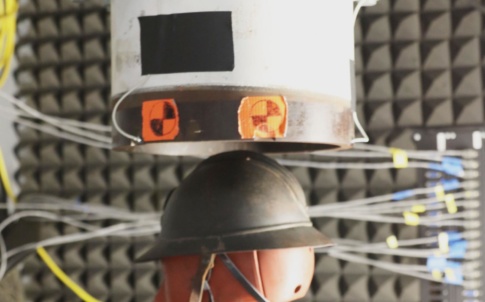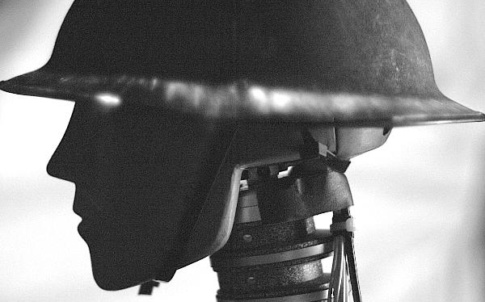
Although helmet technology has evolved considerably in the intervening century since World War I, it is primarily ballistics and blunt force that today’s helmets are designed to withstand. On those metrics, they are far superior to their WWI counterparts, but when it comes to the blast waves from explosives, protection has not improved.
Microlattice padding makes for safer helmets
Striker II fighter pilot helmet: Transforming aerial combat
A study conducted by bioengineers at Duke University compared the effectiveness of World War I helmets from the United Kingdom/United States (Brodie), France (Adrian), Germany (Stahlhelm) and a current United States combat variant (Advanced Combat Helmet). They used a shock tube which was pressurised with helium until a membrane wall burst, releasing the gas in a shock wave. A dummy with pressure sensors was placed underneath, and the helmets were tested in turn at varying distances from the blast to simulate different types of German artillery. The work is published in PLOS ONE.
"While we found that all helmets provided a substantial amount of protection against blast, we were surprised to find that the 100-year-old helmets performed just as well as modern ones," said Joost Op 't Eynde, a biomedical engineering PhD student at Duke and first author of the study. "Indeed, some historical helmets performed better in some respects."

All of the helmets provided a five-to-tenfold reduction in risk for moderate brain bleeding. However, the risk for someone wearing a circa-1915 French "Adrian" WWI helmet was less than for any of the other helmets tested, including the Advanced Combat Helmet.
"The result is intriguing because the French helmet was manufactured using similar materials as its German and British counterparts, and even had a thinner wall," said Op 't Eynde. "The main difference is that the French helmet had a crest on top of its crown. While it was designed to deflect shrapnel, this feature might also be deflecting shock waves."
According to the researchers, the need for helmet blast protection has increased as body armour has improved, making stronger blasts more survivable. But helmet design has yet to take this phenomenon into account, meaning brain trauma from blast survivors is becoming more frequent. It’s hoped that the research could form the basis for a new wave of helmet innovation.
"The difference a simple crest or a wider brim can make in blast protection, shows just how important this line of research could be," said Op 't Eynde.
"With all of the modern materials and manufacturing capabilities we possess today, we should be able to make improvements in helmet design that protects from blast waves better than helmets today or 100 years ago."




Red Bull makes hydrogen fuel cell play with AVL
Formula 1 is an anachronistic anomaly where its only cutting edge is in engine development. The rules prohibit any real innovation and there would be...